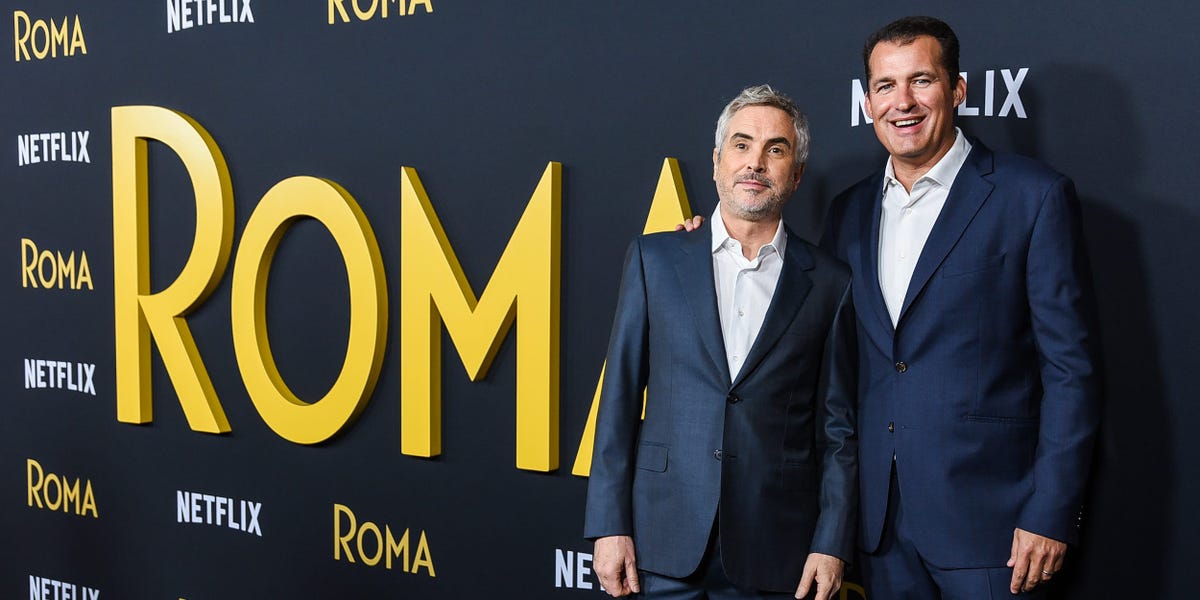Five years ago, Netflix was making a big push into film, throwing big money at filmmakers and giving many auteurs free rein.
Now, as theaters face yet another crisis year, with big projects delayed by strikes — the next “Mission: Impossible” and “Captain America: Brave New World” are just two of the high-profile titles pushed from 2024 to 2025 — and grim box office estimates, Netflix is pulling back on original films. The streamer told Variety it plans to make 25 to 30 narrative US features a year after a stated goal three years ago of releasing one original title a week.
The downsizing of Netflix’s film ambitions is on pace with a broader contraction at the streamer, which announced 88 fewer original films last year than in 2022. Its retreat added to the worries of independent filmmakers as they headed into this year’s Sundance Film Festival, which has seen a decline in buying activity by the streamers in recent years. But for some on Wall Street, the right number of Netflix original films just might be zero.
Here’s how the dominant streamer changed how movies are made, distributed, and consumed — and why Hollywood’s contraction and the reality of streaming economics and viewer habits bode badly for the future of original film, and not just at Netflix.
Netflix’s rise has been a mixed bag for film
When Netflix film head Scott Stuber joined the company in 2017, the mandate was quantity. Netflix was racing to amass a big library, knowing that legacy media companies would ultimately pull their licensed titles from its service to build their own competing streamers.
Stuber waved big checks and gave filmmakers artistic freedom, fostering strong relationships with top talent like David Fincher in the process. Netflix announced a whopping 232 original films in 2021, according to Ampere Analysis.
The results were mixed in terms of critical and audience reception, but Netflix began to be seen as a force in film and won Oscars for prestige projects like “Roma” and “Marriage Story.” The streamer’s stance against theatrical windows — focused on putting its Oscar contenders in cinemas only for the required qualifying runs — has been debated inside Netflix and also dismayed some filmmakers. Still, Stuber and his team, along with co-CEO Ted Sarandos, built a reputation for being friendly to those filmmakers who were willing to forgo the big screen.
“It always felt like they were betting on the creators,” said one producer who has a deal with Netflix.
Netflix and other streamers created new avenues for film distribution
But the direct-to-streaming approach, along with pandemic lockdowns, also trained people to watch films at home versus in theaters, denying filmmakers the marketing and revenue that theatrical releases can bring.
Independent filmmaker Ted Hope, who spent five years as a film exec at Amazon, has argued that as they pursued global expansion, Netflix and other streamers priced out local buyers in foreign territories. That reduced the pool of film buyers, which in turn limited the variety of stories being told, he said.
“If things keep going as they have, we’ll have significant problems in getting diversity, variety of movie titles,” he told Business Insider.
Hope and others in the independent film world have also criticized Netflix for pulling back on buying films with challenging or political themes in a pivot to more mainstream fare. This trend has been particularly notable in Netflix’s approach to documentaries, which it helped popularize by providing a platform with global reach. The streamer has continued to acquire or produce some harder-hitting titles, including “Black Barbie” and 2024’s “Power” about policing. At Sundance, it has so far acquired the doc “Ibelin,” which tells the story of a gamer who died of a degenerative muscular disease at age 25.
Netflix is now taking less-is-more approach
Stuber now concedes the rapid production schedule didn’t always lead to the best work and told Variety that his focus is on a more deliberate process. He cited titles such as “Maestro” and “May December,” among the streamer’s buzzy awards-season releases, as representative of this new approach. “Right now, we’re not trying to hit a set number of film releases. It’s about ‘Let’s make what we believe in,'” he told Variety.
Many in the film world agree that Netflix’s go-go spending was unsustainable. “Ask any studio; it’s hard to have 50 if not 30 movies of quality,” said Kevin Goetz, founder and CEO of Screen Engine/ASI, a media research and data firm that works across the major studios and streamers.
Netflix’s original films started declining in 2022 from the 2021 peak of 232. It announced an estimated 95 in 2023, when the Hollywood actors’ and writers’ strikes accentuated the situation by shutting down most production, according to Ampere Analysis.
Streaming economics suggest Netflix could make even fewer movies over time.
Netflix and other streamers face a growing problem keeping subscribers, who are canceling more of their services. Part of their answer is to lean into procedurals or long-running TV series that can keep audiences coming back. Movies may cost less to make but might just get watched once. It’s partly why streamers will shift away from the genre, Wedbush analyst Michael Pachter told Business Insider.
“Most streamers who do original movies will tell you, it won’t get you subscribers, it won’t keep your subscribers,” Kasey Moore, who runs the site What’s on Netflix, told BI.
Netflix and other streamers also are making a big push into ads to help offset the cost of content, which could advantage TV series over movies.
TV shows are more accommodating of ads than movies. They also account for more watch time than movies do. Netflix’s recent engagement report revealed movies made up just 11 of its top 100 most-streamed titles for the first half of 2023, according to an analysis by Puck News. More watch time means more ads streamers can show viewers.
Should Netflix quit film altogether?
Some analysts have questioned Netflix’s ability to make films that achieve the cultural relevance some of its series like “Squid Game” and “Stranger Things” have (to be fair, the same could be said of movies vs. series on Amazon’s Prime Video and Apple TV+).
Yet maybe direct-to-Netflix features should be evaluated differently, LightShed Partners suggested. “In a streaming world, engagement is the north star and direct-to-Netflix feature films are driving an absurd level of engagement,” LightShed analysts wrote in a December 13 note, saying that while direct-to-streaming movies haven’t matched the cultural impact of theatrical releases, Netflix’s data dump showed it’s still gotten a lot of view time for its films.
Netflix has made clear it’s not interested in pursuing a wide theatrical release strategy, saying its focus is on attracting and retaining subscribers. But Goetz argues that even with a smaller slate, Netflix still could be a big player in movies, as it doesn’t have the budget constraints and imperative to reach wide audiences that legacy studios have. While Netflix has done big splashy campaigns for its awards titles as well as for select projects like “Rebel Moon,” Goetz also called on the company to do more to drum up excitement for its films, saying it’s “missing an opportunity” to drive viewership.
At least one analyst thinks Netflix could eventually let that opportunity pass by. Without a broad theatrical strategy, the streamer’s movie revenue is limited, Wedbush’s Pachter said, noting it’s expensive to work with the big stars that can attract large audiences.
“It would be super smart for Netflix to get out of movies,” Pachter said.
This article was originally published on January 13 and has been updated.
Read the full article here





